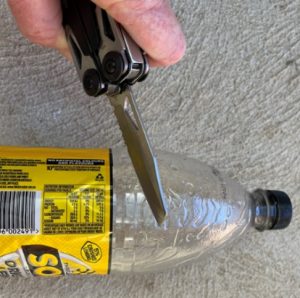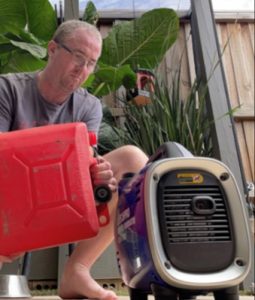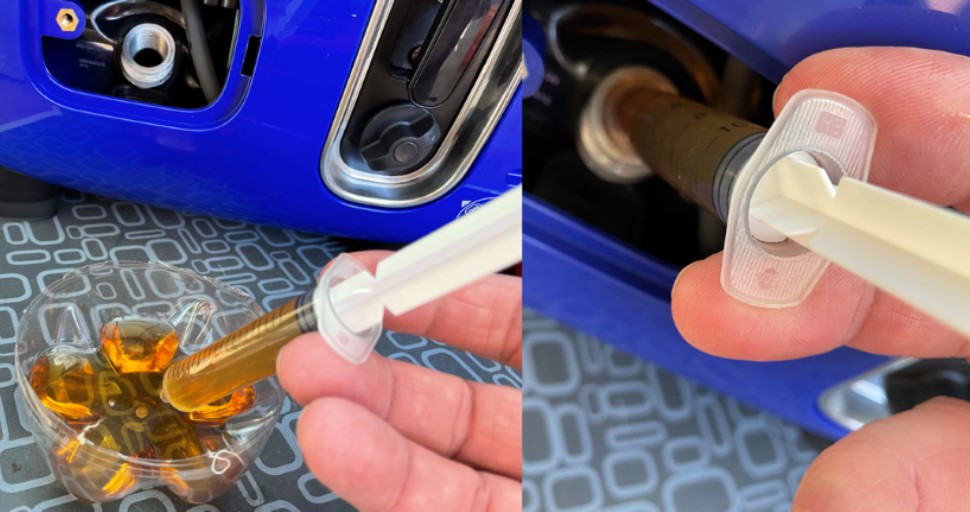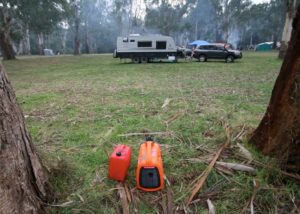By Marty Ledwich, February 11, 2021 – Original article RV Daily
Generators are a much-maligned piece of equipment but for many travellers, they are an essential bit of kit. If you’re considering getting one to take on your travels or you’ve never used one before, here are five simple hacks and tips that might prove helpful when you finally pull that generator out and use it.
1. Makeshift fuel funnel


Like any motor-driven piece of equipment, a generator requires fuel which means carrying a full jerry can and getting the fuel into the generator’s tank. Problem is, the filler for the tank is quite small and, like filling up a lawnmower, its very easy to spill fuel everywhere. Of course, you can use a fuel funnel but who wants to carry a smelly fuel funnel everywhere you go? Wouldn’t it be great to have a disposal funnel and not worry about the smell? If you have a plastic drink bottle, simply cut the top off and, presto, you have a temporary fuel funnel. When you’re finished with it, just throw it away with your recycling.
Top Tip: While we’re on the subject of putting fuel in your generator, another trick to prevent fuel from overspilling everywhere is to hold the jerry can with the outlet at the top. This gives you more control over the pour and stops the fuel gushing out (see photo above, right).
2. Engine oil filler
When you first purchase a generator, you have to ensure the engine has oil in the sump. Most portable generators will have an oil filler and sump cap behind a small plastic cover. Remove this cover and unscrew the cap. That tiny nozzle is where the engine oil has to go. It is almost impossible to fill it without making a mess. While you’re cutting up that drink bottle, cut off the bottom section and pour some engine oil into it. Then, using a syringe, gradually fill up the sump with the required amount of engine oil. Easy and zero mess.
Top Tip: Always check the user manual for your generator to ensure you use the right grade of motor oil. Most use SAE 10W/30 motor oil. If you are using the generator in very cold environments, the manual may specify SAE 5W/30 oil.
3. Dipstick oil level trick

While we are on the subject of the engine oil, you will notice the sump cap has a small dipstick for checking the amount of engine oil in the sump. What you probably didn’t know is that to measure the oil level, there is no need to screw the cap all the way in and out again. It is designed to measure the oil level by just touching it to the filler nozzle. Don’t screw it in otherwise you risk not putting enough engine oil in the sump which could result in engine damage. Once you’re happy with the oil level, then screw the cap back on.
Top Tip: Always consult the generator’s user manual to see how often the engine oil needs changing. Just like the oil in your car engine, the oil won’t last forever. And just because you may not have used the generator for a long period of time, doesn’t mean the engine oil hasn’t degraded during that time.
4. Kickstart a battery charger
Do enough travelling and you’re bound to have to deal with a flat 12-volt battery. If you try to recharge the battery with many smart chargers, if the voltage of the battery is too low, it may not start the recharge cycle. There are situations where a smart battery charger won’t recognise a battery because the battery is deeply discharged. Many times, all it takes to get the charger working again is to put some charge into the battery from another source. Most portable generators have a 12-volt output and a set of cables with alligator clips which can be used for this purpose. Just start the generator, connect the cables to the battery and run it for no more than 10 minutes. This should put enough charge into the battery and allow the smart charger to do its job.
Top Tip: Never leave a charging battery unattended especially when trying to rejuvenate a completely flat battery. There is a risk that it will overheat or, worse, explode. If the battery gets too hot to touch, cease charging immediately.
5. Be kind to your neighbours

One of the biggest complaints about generators is the noise they make. Some generators are quieter than others never-the-less, in a quiet campground, the noise can travel long distances. A cool trick is to place the generator as far from the main camping area as possible and ensure the exhaust is facing away from the campground. If possible, park your car in front of the generator as a further sound barrier. Your neighbours will thank you.
Top Tip: Try to keep the length of the power cord from your generator to your appliance to no more than 20 metres. Any longer and you could start to experience degraded performance.